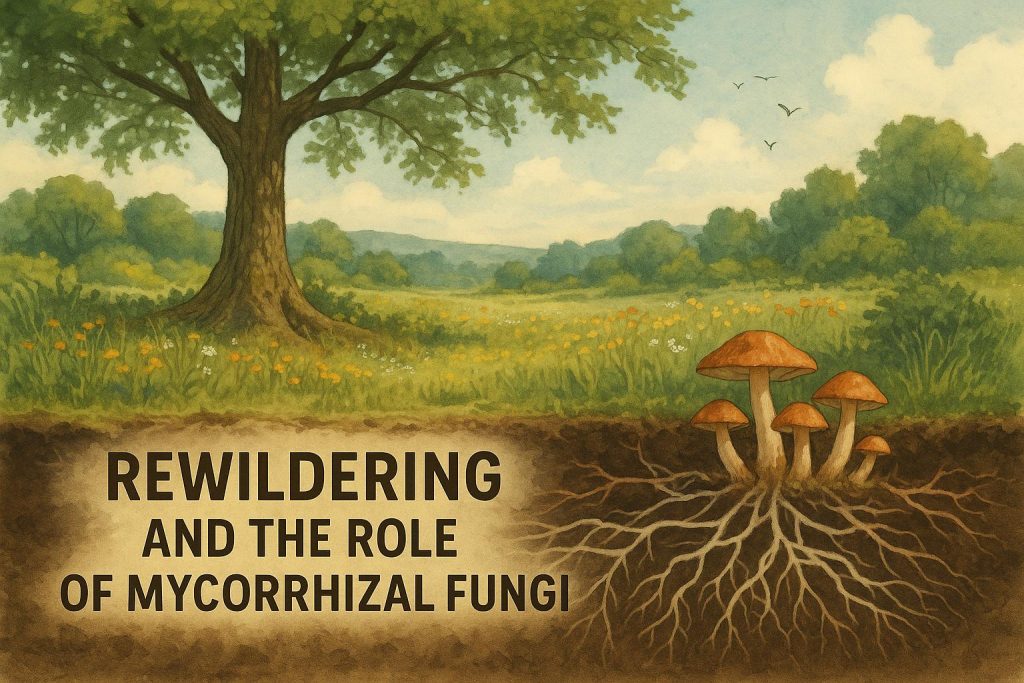
Rewildering and the Role of Mycorrhizal Fungi
Introduction to Rewildering
Rewildering, more commonly referred to as rewilding, is a comprehensive conservation effort designed to restore natural ecosystems to their primal, untamed states. The core objective is to reintroduce flora and fauna that have been displaced, diminished, or entirely eradicated due to human activities and interventions. This complex process also involves the removal of invasive species and barriers that inhibit natural processes. Rewildering is recognized as a critical strategy in combating environmental degradation and promoting ecological sustainability. It goes beyond mere restoration, aiming to allow natural processes to take the lead in managing landscapes, thus presenting a transformative approach to conservation.
The Importance of Mycorrhizal Fungi
Within the framework of rewildering, mycorrhizal fungi play an essential and sometimes underappreciated role. These fungi form symbiotic relationships with plant roots that are fundamental to the health and success of rewildering projects. Unlike other elements of the ecosystem, mycorrhizal fungi are instrumental in facilitating the exchange of nutrients between plants and their environment, thereby improving overall plant health. The establishment of mycorrhizal networks is critical for plant growth and has become a cornerstone in the structural integrity of the world’s diverse ecosystems. These networks connect different plant species, which allows for the effective transfer of resources such as water and essential nutrients, including phosphorus and nitrogen, across various areas.
How Mycorrhizal Fungi Promote Plant Growth
One of the most significant contributions of mycorrhizal fungi to plant growth is their ability to extend the root systems of plants. By doing so, they increase the surface area available for the absorption of water and nutrients. Through these networks, mycorrhizal fungi provide plants with indispensable elements like phosphorus and nitrogen, which are pivotal in plant development, flowering, and fruiting. In exchange, plants supply these fungi with carbohydrates produced during photosynthesis. This mutually beneficial relationship not only enhances plant resilience against a variety of environmental stresses, such as drought and soil salinity, but also supports increased biodiversity by creating a more hospitable environment for a broad range of plant species.
Mycorrhizal Fungi and Soil Health
The contribution of mycorrhizal fungi extends beyond plant growth, also playing a crucial role in maintaining healthy soil. These fungi produce substances such as glomalin, which is vital in forming soil structure. Glomalin helps bind soil particles together, resulting in improved soil aeration, which ultimately facilitates root development and proliferation. By enhancing nutrient cycling and organic matter decomposition, mycorrhizal fungi are indispensable in keeping soils fertile and productive. This ultimately leads to healthier ecosystems, as plants rooted in fertile soils tend to be more robust and better equipped to support wildlife.
Rewildering Strategies Involving Mycorrhizal Fungi
Rewildering strategies often place a strong emphasis on the inclusion and support of mycorrhizal fungi. One approach involves the inoculation of soils with mycorrhizal spores or using compost and mulch, which provide a conducive environment for fungal growth. This practice invigorates the soil microbiome, enhancing nutrient availability for plant uptake. Additionally, promoting the growth of plant species known to form strong symbiotic relationships with these fungi can also yield fruitful ecological recovery. These strategies collectively assist in restoring natural ecological processes, thereby improving habitat quality, which benefits a wide range of organisms, from insects to large mammals.
For those interested in the specifics of these techniques, more resources are available on mycorrhizal fungal inoculation methods, which offer practical insights and guidelines for implementing these strategies effectively in various ecological contexts.
Challenges and Considerations
The implementation of mycorrhizal fungi in rewildering, while beneficial, is not without its challenges. A significant consideration is the need to understand the specific fungal species that are best suited for particular ecological contexts. Not all mycorrhizal fungi have universal applicability; their interactions with local flora and fauna can differ widely, necessitating a tailored approach. Current research efforts are dedicated to optimizing these relationships to bolster ecological restoration endeavors.
Additionally, environmental variables such as climate, soil type, and even existing land use patterns can markedly influence the success of mycorrhizal fungal inoculation. This necessitates the development of strategies that are not only locally adaptive but also responsive to changing environmental conditions, ensuring maximum efficacy and sustainability.
Conclusion
In conclusion, mycorrhizal fungi represent a vital component of successful rewildering initiatives. Through their role in enhancing plant growth and improving soil health, these symbiotic organisms make indispensable contributions to the restoration of natural ecosystems. As the exploration and implementation of mycorrhizal strategies continue, they hold immense potential in achieving sustainable conservation goals and reviving global biodiversity. The ongoing commitment to integrating these fungi into rewildering projects reflects their importance in forging resilient ecosystems poised to withstand the pressures of a rapidly changing world.